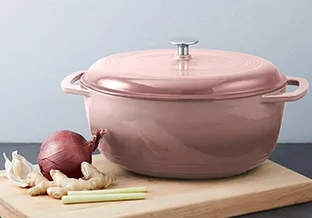
sizzler plate material
Sizzler Plate Materials The Key to an Unforgettable Dining Experience
When it comes to enjoying a delicious sizzler meal, the type of plate used can significantly enhance the experience. Sizzler plates are designed to serve hot, sizzling dishes that not only tantalize the taste buds but also engage the senses with their appealing presentation and aromatic steam. Choosing the right material for these plates is crucial to maximizing both performance and safety. In this article, we will explore the various materials used for sizzler plates, their advantages, and their impact on the overall dining experience.
1. Cast Iron The Classic Choice
Cast iron is perhaps the most iconic material for sizzler plates. Known for its excellent heat retention and distribution, cast iron ensures that food stays hot from the first bite to the last. When sizzling, the plate creates a mouthwatering sound that enhances anticipation, making the dining experience more engaging. Additionally, cast iron develops a non-stick surface over time when properly seasoned, reducing the likelihood of food sticking and making cleanup easier.
Another advantage of cast iron is its durability. These plates are nearly indestructible, able to withstand high temperatures and the rigors of kitchen use. However, they do require special care, including seasoning and careful handling to avoid rust. Despite the extra maintenance, many chefs and home cooks prefer cast iron for its unmatched performance in sizzler dishes.
2. Stainless Steel The Modern Alternative
Stainless steel is another popular choice for sizzler plates, particularly in contemporary dining settings. This material is known for its sleek appearance and resistance to corrosion, making it aesthetically pleasing and long-lasting. Stainless steel plates can be heated quickly and evenly, providing a consistent cooking temperature for the food served.
One of the significant advantages of stainless steel is its lightweight nature compared to cast iron. This feature makes it easier to handle and serve. Moreover, stainless steel is less reactive with acidic foods, meaning there is little risk of altering the flavor of dishes like marinades and sauces. However, stainless steel does not retain heat as well as cast iron, which means that food may cool down more quickly.
sizzler plate material

3. Clay and Earthenware A Rustic Touch
For those seeking a more rustic and traditional dining experience, clay and earthenware sizzler plates provide a unique option. These materials, often used in Indian and Middle Eastern cooking, offer excellent heat retention, allowing dishes to remain hot for an extended period. The natural properties of clay help to enhance the flavors of the food, adding a distinct taste to the sizzler experience.
Clay plates are often used in restaurants that focus on traditional cuisine, presenting an authentic feel that complements the dishes served. While they may require more care than metal plates — being susceptible to chipping and cracking — their aesthetic appeal and unique cooking properties make them a cherished option for many culinary enthusiasts.
4. Non-Stick Coated Plates Convenience in the Kitchen
In recent years, non-stick coated plates have become increasingly popular for sizzler serving. These plates typically feature a metal core, often aluminum, coated with a non-stick material to facilitate easy cooking and cleanup. The non-stick surface minimizes the need for excessive oil, promoting healthier cooking practices.
However, it is important to choose high-quality non-stick coatings that can withstand high temperatures without degrading. Some lower-quality options may release harmful chemicals when heated, compromising food safety. Additionally, while convenient, the performance in heat retention can vary, making them less ideal for those looking for the authentic sizzling effect associated with cast iron or clay.
Conclusion
In conclusion, the choice of material for sizzler plates plays a pivotal role in not only the culinary experience but also in how the food is presented and enjoyed. Whether opting for the classic charm of cast iron, the modern allure of stainless steel, the rustic authenticity of clay, or the convenience of non-stick coatings, each option offers unique advantages that cater to different preferences and dining contexts. Ultimately, a well-selected sizzler plate can transform a simple meal into a delightful sensory journey that leaves a lasting impression on diners.
-
Authentic Traditional Chinese Wok for High-Performance CookingNewsAug.02,2025
-
Season Cast Iron Perfectly with GPT-4 Turbo TipsNewsAug.01,2025
-
High Quality Cast Iron Cookware - Baixiang County Zhongda MachineryNewsAug.01,2025
-
Premium Cast Iron Pan: Durable & Perfect HeatNewsAug.01,2025
-
High Quality Kitchen Durable Black Round Cast Iron Cookware Pancake Crepe Pan-Baixiang County Zhongda Machinery Manufacturing Co., Ltd.NewsAug.01,2025
-
Cast Iron Cookware - Baixiang County Zhongda Machinery | Nonstick, Heat ResistanceNewsAug.01,2025


